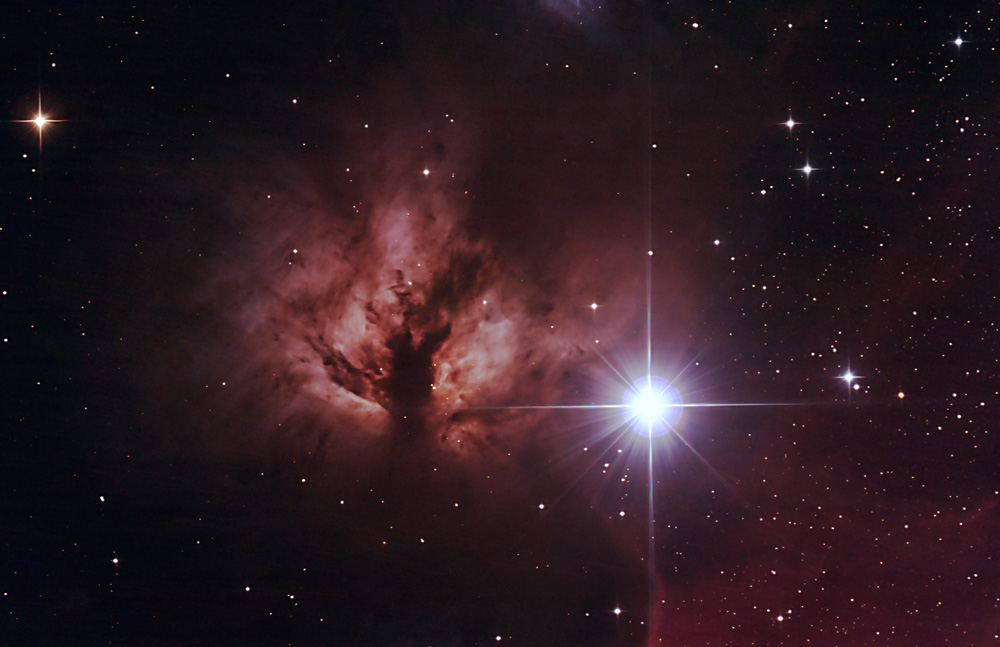 |
NGC 2024 - The Flaming Tree Nebula in Orion
 |
Copyright 2007 Hap Griffin
Known officially as NGC 2024, the aptly named Flaming Tree nebula is a fairly easy telescopic visual target in larger scopes. It lies in the constellation of Orion very close to the easternmost star in Orion's "belt", Zeta Orionis (also known as Alnitak), the bright star at the lower right. The proximity is only an illusion due to our vantage point...Alnitak lies at a distance of 815 light years while the nebula lies at nearly twice that distance...1500 light years.
NGC 2024 is a part of the much larger Orion molecular cloud complex. The nebula glows not from the light of Alnitak, but from a bright star embedded in its structure and only visible through the dusty central lane in infrared light. Recent surveys have revealed a cluster of very young infrared stars hidden to our optical view inside the central dust lane.
Alnitak is remarkable in its own right. It is a class of stars known as Supergiants and shines at a brightness 100,000 times that of our own sun. However, most of its brightness falls in the ultraviolet region, with its optical brightness only 10,000 time that of our sun. Alnitak is also a multiple star system with two close, much smaller companions orbiting it.
You can see this region in context in a wider field photo by clicking HERE.
Date/Location:
December 8, 2007 Griffin/Hunter
Observatory II Bethune, SC
Instrument: Canon 40D Digital SLR (modified) through 10"
F/4.7 Newtonian w/ Baader MPCC
Focal Ratio: F/4.7
Guiding: Auto through Orion ED80 refractor w/ SBIG ST-237
Conditions: Visually clear with passing high cirrus
Weather: 48 F
Exposure: 63 minutes @ ISO 800 (21 x 3 min exposures)
Filters: Baader UV/IR Block internal to camera
Processing: Focused and captured with Breeze Systems
DSLRControl Pro.
RAW to TIFF conversion, frame calibrations, alignment, stacking, Digital Development,
noise reduction, scaling and JPEG conversion with ImagesPlus
V3.
Final tweaks in Photoshop CS2.